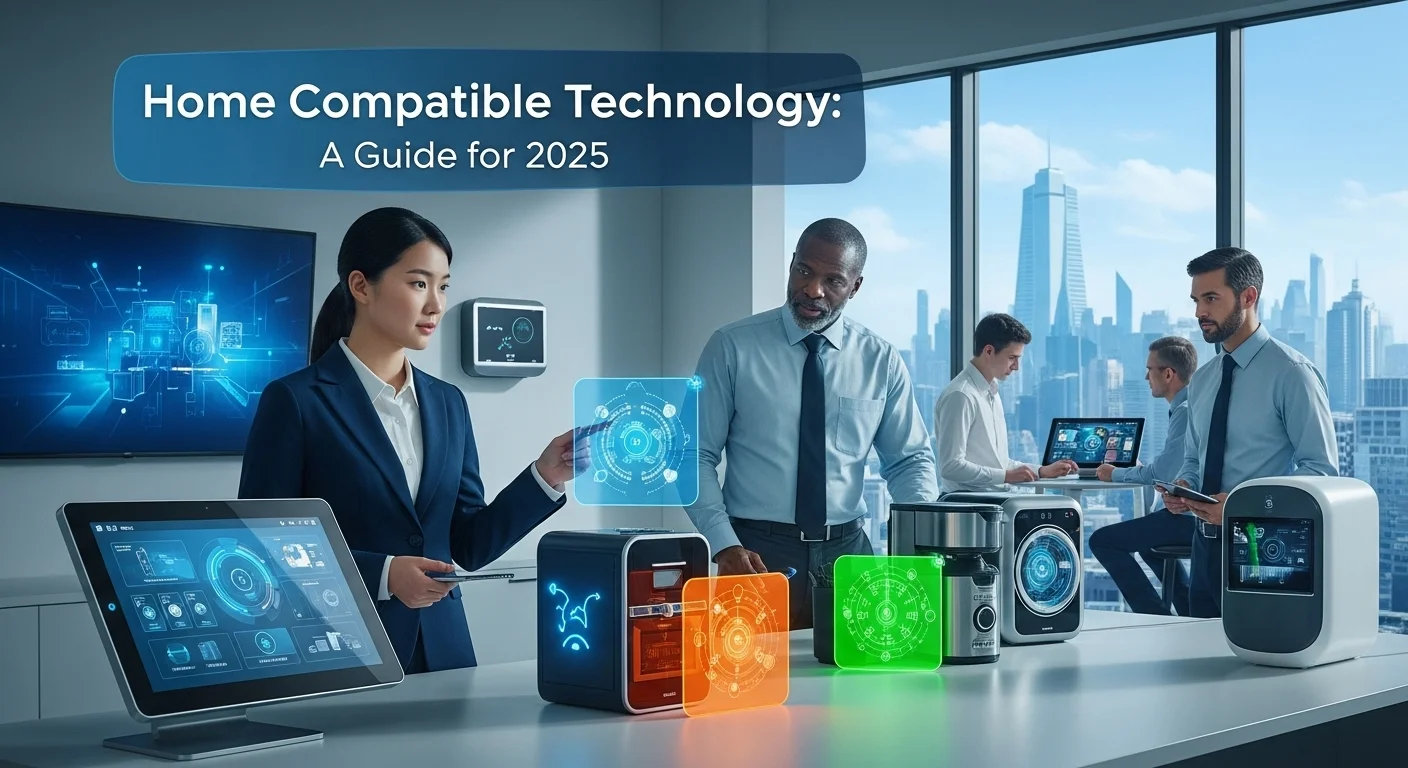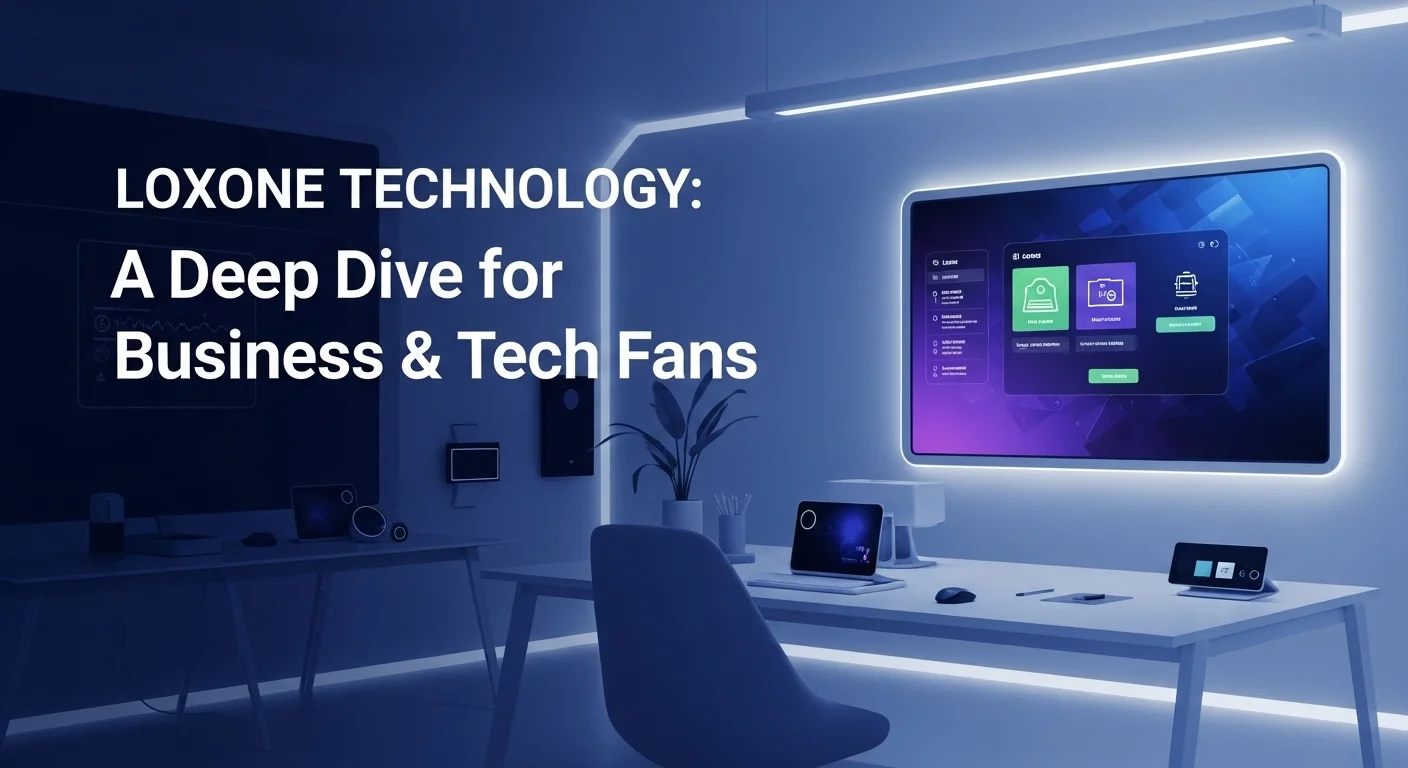The Ultimate Guide to a Truly Compatible Smart Home in 2025

Executive Summary
In my years as a smart home integrator, the biggest frustration I see isn't a lack of cool gadgets—it's that they don't work together. 'Home Compatible' is the simple but powerful idea that all your smart devices, no matter the brand, should communicate and cooperate seamlessly. This guide is my personal roadmap to getting there. We'll cut through the jargon and explore the main control centers like Google Home and Apple HomeKit, the reliable networks like Z-Wave, and even high-end systems like Crestron. Most importantly, we'll talk about Matter, the new standard that's finally making a truly connected home a reality for everyone. For homeowners, this means less hassle and more convenience. For businesses, it's the key to making products people actually want. Let's build a smart home that's genuinely smart.
Table of Contents
Table of Contents
- What is 'Home Compatible' and Why Should You Care?
- Choosing Your Team Captain: Smart Home Ecosystems
- The Secret Language of Your Smart Devices
- Comparing the Giants: Google Home vs. Apple HomeKit
- When to Go Pro: Understanding Crestron Home
- The Z-Wave Advantage: Building a Rock-Solid Network
- Matter: The Universal Translator We've Been Waiting For
- My Golden Rules for a Secure Smart Home
- Solving Common Connection Headaches
- Future-Proofing Your Setup: AI and Smart Investments
What is 'Home Compatible' and Why Should You Care?
The term 'Home Compatible' has become a buzzword, but what does it actually mean for you? Simply put, it's the ability for smart devices from different manufacturers to work together in harmony. I can't tell you how many times I've seen a home filled with 'smart' gadgets that were anything but. A smart thermostat from one brand, smart lights from another, and a video doorbell from a third—all living on their own little islands, each needing its own app. That's not a smart home; it's a digital headache. True compatibility transforms that chaos into a coordinated system. It's the magic that lets your front door lock trigger your hallway lights to turn on and your thermostat to adjust, all automatically. This seamless interoperability is the difference between a collection of gadgets and a truly intelligent living space that simplifies your life.
Choosing Your Team Captain: Smart Home Ecosystems
To achieve this harmony, you need a 'team captain'—a central platform to manage all your devices. These are what we call smart home ecosystems, and the biggest names in the game are Google, Apple, and Amazon. Think of them as the conductor of your smart home orchestra.
- The universe of smart devices compatible with Google Home is massive. Centered around the incredibly smart Google Assistant, it’s an open playground. This openness encourages tons of manufacturers to join in, giving you an amazing amount of choice, from budget-friendly smart plugs to high-end appliances. If you love options and flexibility, Google is often the way to go.
- On the other hand, the world of apple compatible smart home devices, powered by HomeKit, is more like a curated, high-security club. Apple is famous for its strict privacy and security standards. The experience is incredibly smooth if you're already using an iPhone, iPad, or Apple Watch. For years, I've recommended HomeKit to clients who prioritize privacy and a seamless, 'it just works' experience above all else.
The Secret Language of Your Smart Devices
For devices to work together, they need to speak the same language, or 'protocol.' You don't always see these, but they're working constantly behind the scenes.
- Wi-Fi and Bluetooth: You already know these. They're everywhere, and many devices use them for a quick and easy setup. The downside? Too many Wi-Fi devices can clog up your home network, and Wi-Fi can be a battery drain for small sensors.
- Z-Wave and Zigbee: These were built specifically for the smart home. They create a 'mesh network,' which is a fancy way of saying that your powered devices (like light switches and plugs) help pass the signal along. This makes the network super reliable and extends its range. A z wave compatible smart home system, for instance, is a favorite in the security world because it's so robust and doesn't interfere with your Wi-Fi.
- Crestron Home: In the world of luxury and professional installations, you'll find systems like Crestron. These aren't DIY—they're high-performance, professionally installed ecosystems that integrate everything from home theaters to climate control. Crestron home compatible products are part of a bespoke system where reliability is guaranteed.
- Matter: For years, the battle between protocols created confusion. Matter is the peace treaty. Developed by Apple, Google, Amazon, and others, it's a universal language that runs on top of existing technologies like Wi-Fi. A Matter-certified device will work with any Matter-certified controller. It’s the key to a future where you can finally buy with confidence.

A Practical Guide to Building Your System: Comparing the Giants
Choosing your ecosystem is the most important first step. Your choice will shape your entire smart home experience. Let's break down the real-world differences between the main players and specialized systems.
Google Home: The Open Playground
I often describe the ecosystem of smart devices compatible with google home as the most democratic and flexible option. Its strength lies in its openness.
Why I recommend it: Google Assistant's voice recognition is phenomenal at understanding natural, conversational language. Plus, its integration with Google's other services, like Search and Calendar, makes it incredibly powerful. For manufacturers, it's an easy platform to join, which means you, the consumer, get a massive variety of devices at every price point.
The Business Angle: For companies, supporting Google is essential to reach a broad audience. The strategy is simple: get the Google Assistant everywhere, which in turn draws users into Google's ecosystem of services and hardware.
Apple HomeKit: The Secure Fortress
The world of apple compatible smart home devices is all about security, privacy, and a polished user experience. It's a walled garden, but it's a beautiful and safe one.
Why I recommend it: HomeKit's commitment to security is unmatched. It mandates end-to-end encryption and local processing whenever possible. This means your data stays private, and your home automations still work even if your internet goes down. For anyone invested in Apple products, the control is seamlessly built into your iPhone or Apple Watch. It feels incredibly slick.
The Business Angle: The certification process is stricter, but earning the HomeKit badge is a signal of quality and security. It tells customers, 'This is a premium, trustworthy product,' which is a powerful selling point for a discerning audience.
When to Go Pro: Understanding Crestron Home
Sometimes, a DIY solution isn't enough. Crestron is the gold standard for high-end, professionally installed systems. This is for the client who wants a completely bespoke smart home in a luxury residence, office, or even a yacht.
How it works: A professional integrator designs a system using a central Crestron processor that acts as the brain of the home. It uses a mix of ultra-reliable wired and wireless connections. The list of crestron home compatible products is enormous, including top-tier audio, video, and security brands. Here, 'compatibility' means guaranteed, rock-solid performance, backed by professional support.
The Z-Wave Advantage: Building a Rock-Solid Network
Underneath the shiny apps and voice assistants, the underlying network technology matters. This is where protocols like Z-Wave shine.
Why it's great: A z wave compatible smart home system creates its own dedicated 'mesh' network. Every powered device helps relay the signal, making the network stronger and more reliable as you add more devices. It also operates on a different frequency from Wi-Fi, so it won't slow down your Netflix stream. The Z-Wave Alliance has strict certification, so if you see the logo, you know the products will work together. It's my go-to for critical devices like door locks and security sensors.
Matter: The Universal Translator We've Been Waiting For
For years, the biggest problem in the smart home was the lack of a common language. Matter is the solution we've all been waiting for. It’s an industry-wide collaboration to make sure everything just works together.
How it helps you: Matter acts as a universal application layer. A Matter-certified light bulb can talk to Apple Home, Google Home, and any other Matter platform simultaneously. This 'multi-admin' control is revolutionary. The Matter logo is your new symbol of trust. It means 'this will work with my setup,' ending the guesswork and confusion.
The Impact on Business: For manufacturers, this is huge. They can now build one product that works everywhere, saving massive amounts of money and time. This allows them to focus on what matters: innovating and creating better products for us. By handling the basic connectivity, Matter is leveling the playing field and accelerating the future of the smart home.

Pro Tips for a Smarter, Safer Home: My Golden Rules
A smart home is a connected home, and that means security is job number one. Here are the practical strategies I use to keep my clients' homes—and my own—safe, reliable, and ready for the future.
My Golden Rules for a Secure Smart Home
Think of your digital security like locking the doors and windows of your physical house. It's not optional.
1. Fortify Your Router: Your Wi-Fi router is the main entrance. Secure it first. Always change the default admin password to something long and unique. Use WPA3 (or WPA2) encryption and set up a separate guest network so visitors' devices can't access your core smart home tech.
2. Lock Down Your Devices: Every smart gadget is a potential entry point. Change the default password on every new device you install. Crucially, enable two-factor authentication (2FA) on every app and account that offers it. This is one of the single most effective security measures you can take.
3. Keep Everything Updated: Manufacturers release firmware updates to patch security holes. Turn on automatic updates whenever you can. I make a habit of checking my devices for updates every couple of months, just to be sure.
Solving Common Connection Headaches
Even the best systems have hiccups. Here’s my simple checklist for fixing things when they go wrong.
1. The Universal Fix: Have you tried turning it off and on again? It’s a cliché for a reason. Power-cycling the device, your hub, and then your router solves a surprising number of problems.
2. Check Your Wi-Fi Signal: Weak Wi-Fi is a common culprit. If a device keeps dropping off, it might be too far from your router. This is a great reason to consider a mesh Wi-Fi system for even coverage or to build your system around a non-Wi-Fi protocol like a z wave compatible smart home system, which has its own robust network.
3. Pairing Mode and Hubs: When adding a new device, make sure it's actually in 'pairing mode' (check the manual!). Also, ensure your central hub's software is up to date, as updates often include improved compatibility for new products.
Future-Proofing Your Setup: AI and Smart Investments
The smart home is always evolving. Here’s how to make smart choices today that will pay off tomorrow.
Look for AI-Powered Features: Artificial Intelligence is making homes proactive instead of just reactive. AI can learn your routines and anticipate your needs, like adjusting the lights before you even enter a room. Security cameras with AI can tell the difference between a person and a passing car, which means fewer false alerts for you.
Embrace the Matter Standard: My single biggest piece of advice for buying new tech: look for the Matter logo. This is your best guarantee that your investment will remain compatible and useful for years to come, no matter which ecosystem you prefer.
Invest in the Foundation: Don't just spend money on fancy gadgets. A powerful mesh Wi-Fi system is the most important investment you can make for a smooth smart home experience. A strong network is the foundation everything else is built on.
Find a Trusted Resource: The tech world moves fast. For excellent, up-to-date analysis on smart home technology and security, I often point my clients to trusted sources like The Verge's technology section. Staying informed helps you separate the hype from what's genuinely useful.
Expert Reviews & Testimonials
Sarah Johnson, Business Owner
This was a good overview of Home Compatibility. As a business owner, I would have loved a few more practical examples of B2B applications, but the information is solid. ★★★☆☆
Mike Chen, IT Consultant
A very useful article on Home Compatibility. It clarified several key concepts for me and helped me understand the landscape better. Well-written and easy to follow. ★★★★☆
Emma Davis, Tech Expert
Excellent and comprehensive guide! This deep dive into Home Compatibility was exactly what I needed for my specialization work. Everything was explained perfectly. ★★★★★



